1. Delicate or Vintage Textiles on Display
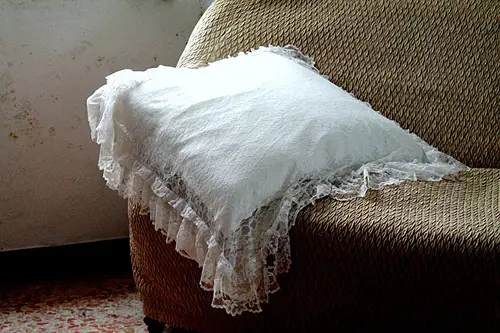
Antique lace throws, silk pillows, or a vintage kilim draped “just so”? Gorgeous, yes—but not built for paws or peanut butter. These materials are easily snagged, stained, or shredded. Their presence says, “Please enjoy… gently… from a distance.”
People with young kids or pets usually rotate those kinds of heirlooms out of daily-use zones. Or they layer them in ways that make them easier to preserve. Here, they’re front and center, daring you to test their durability. And that, more than anything, signals a living room meant for admiration, not actual living.
2. All-White Upholstery
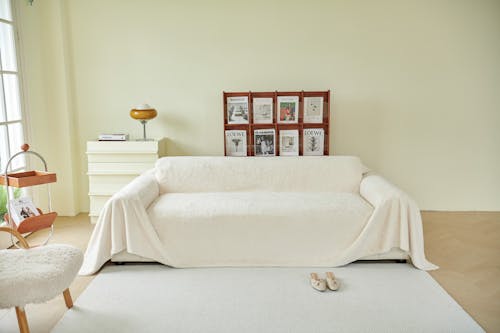
Nothing says “hands off” like a white linen couch. While it might look stunning in a design magazine, in real life, it’s a magnet for muddy paws, sticky fingers, and accidental spills. Anyone who has spent more than ten minutes with a toddler knows that white furniture is basically a dare. It’s not a coincidence that many parents and pet owners opt for darker, patterned, or washable covers.
White fabrics show everything—juice, peanut butter, dirt, or the mysterious substances kids and pets tend to produce. Even if it’s performance fabric, the anxiety it causes around messes kind of defeats the point. This choice screams, “Please sit down, but also… don’t move.” It’s a clear sign the room is meant to be admired, not actually lived in.
3. Fragile Sculptures on Low Tables
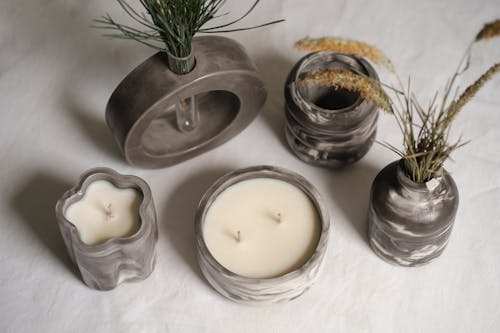
That delicate glass orb or ceramic giraffe right at tail-height? It’s a tragedy waiting to happen. Kids and pets are notoriously curious and uncoordinated—knocking over a “statement piece” is practically part of their job description. Putting fragile objects within easy reach signals that the homeowner isn’t expecting small creatures to roam free.
Many experienced pet owners will tell you: tails, noses, and playful paws don’t mix well with anything that breaks. Similarly, a toddler testing gravity doesn’t care that it’s “hand-blown from Murano.” If it’s on a coffee table, it’s probably getting touched. This setup tells you the house is designed for aesthetics over adaptability.
4. No Slipcovers, Anywhere
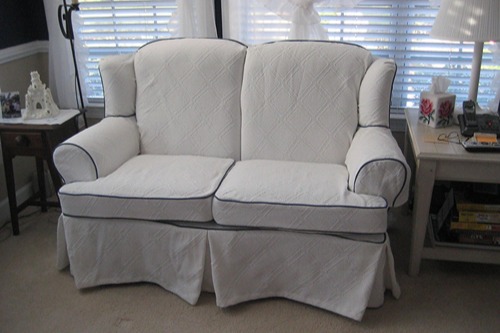
Slipcovers are the unsung heroes of family life. You can wash them, change them, and not lose your mind over the latest couch-crayon incident. A living room without a single washable or removable cover means one thing: zero tolerance for mess. That’s a lifestyle that doesn’t make space for unpredictability—which is essentially all children and pets are.
While some high-end upholstery can be treated for stains, it still requires vigilance. No-slipcover zones say, “This is not your playground—it’s an exhibit.” People who expect spills plan ahead with damage control. And this? This looks like it was styled for a catalog, not survival.
5. Expensive Rugs with No Pattern
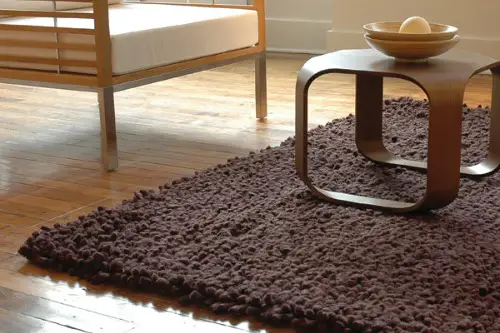
A solid cream wool rug? Bold move. Patterned rugs help camouflage everyday chaos—everything from muddy pawprints to the inevitable juice splash. A pricey, pale floor covering with no visual texture says someone is prioritizing design over durability.
These rugs can’t be cleaned with a quick scrub or ignored until vacuum day. They’re delicate, often high-maintenance, and a major investment. Choosing one signals that accidents are not part of the plan. In other words, kids and pets should probably be elsewhere.
6. Coffee Table Decor That Includes Candles (Unlit or Not)

A trio of unsupervised pillar candles on a tray looks elegant—but also like an accident in waiting. Even unlit, candles are a hazard around wagging tails or tiny hands. One nudge and you’ve got wax on the rug or a cracked container. It’s the kind of centerpiece that works in theory, not in toddler territory.
Most parents and pet owners ditch flame-centric decor early on. Even flameless ones get chewed, knocked, or moved out of the way. If they’re still in the middle of the table, it means no one’s worried about curious creatures exploring. That’s either extremely optimistic—or highly controlled.
7. Glass Coffee Tables
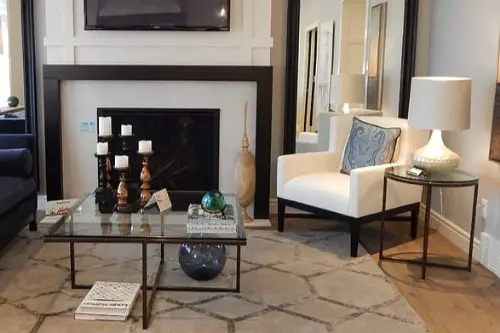
Sleek and modern? Absolutely. But they’re also fingerprint magnets and injury risks. Glass tables are sharp-edged, tip-prone, and not forgiving when toys (or heads) hit them. They’re one of the first things people replace when kids start pulling themselves up or dogs go galloping through the house.
Tempered or not, they’re just not built for the chaos of family life. They show every smudge and every snack-attack aftermath. Having one in a high-traffic area says the homeowner values form over kid-proof function. In other words, this living room is more showroom than playroom.
8. No Storage for Toys or Pet Gear
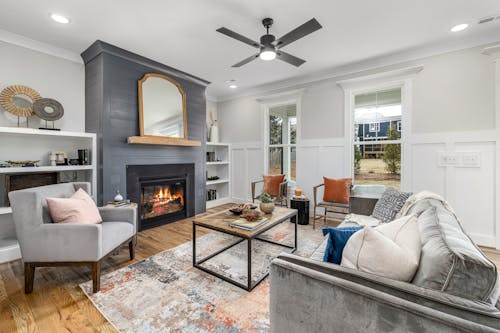
A pristine living room with zero visible signs of daily life? A little suspicious. No baskets, bins, or hidden ottomans suggests that toys, leashes, and chew bones are not part of the landscape. It’s either hiding an entire second playroom—or trying to deny that play even happens.
People who live with kids and pets usually embrace some level of clutter management. That means accessible storage: baskets under tables, cubbies, maybe even a soft-sided toy bin in the corner. When that’s missing, it can feel like someone’s trying to keep life at arm’s length. As if the room is more about maintaining a vibe than making memories.
9. Floor-Length Curtains (That Pool)

Dramatic, flowing curtains are a visual treat—but a logistical nightmare with pets or toddlers. Dogs love brushing against them, cats think they’re climbing gyms, and kids can’t resist hiding behind them. Floor-length drapery that puddles stylishly on the ground is beautiful, but wildly impractical. It’s practically begging to be yanked or stained.
When people live with unpredictable small beings, they usually go for tailored, raised hems. Something that doesn’t double as a chew toy or napkin. If those puddled curtains are still spotless, that’s not luck—it’s child and pet avoidance. This is a no-chaos zone masquerading as cozy.
This post 9 Living Room Details That Suggest the Owner Doesn’t Trust Children or Pets was first published on Greenhouse Black.
